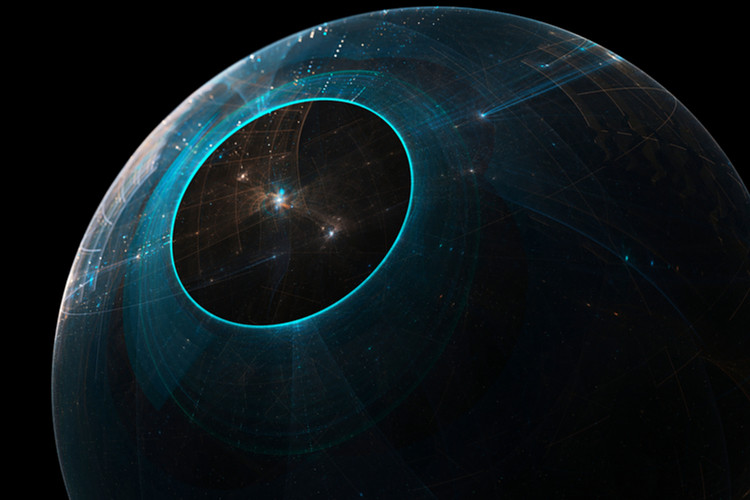The Death Star was one of the most innovative aspects of the first Star Wars movie. Its immense size made it as large as a moon.
That’s what Han Solo thought it was until Obi-Wan Kenobi corrected him and said, “That’s no moon.”
Audiences were greeted with a second Death Star in Star Wars Episode VI: Return of the Jedi. It was an improved version of the original, which had been destroyed at the end of A New Hope.
If we compare Death Star 1 vs. 2, which would win out?
Death Star 2 was technologically better than Death Star 1, but it still succumbed to the Rebel forces. Death Star 1 is also more memorable.
Table of Contents
Death Star 1
It is about 120 kilometers, or 75 miles, in diameter and contains a crew of about 1.7 million people. It also had about 400,000 droids.
The Galactic Empire built this original Death Star to gain more control over the Star Wars galaxy. It was a completely innovative superweapon: a moon-sized, mobile battle station capable of destroying a planet.
It has a superlaser that is powered by kyber crystals–the same energy form that goes into lightsabers. The superlaser allowed Death Star 1 to destroy the planet Alderaan in the first movie.
However, a major shortcoming of this Death Star is that it took about one day to recharge the superlaser. A second flaw was that it was vulnerable to attack.
At the end of A New Hope, the Rebels find out about an exhaust port that, if hit directly, sets off a chain reaction that destroys the Death Star. Luke Skywalker was able to land this direct hit, and Death Star 1 exploded.
Death Star 2
Death Star 2 makes its appearance in Star Wars Episode VI: Return of the Jedi. It was built after the first Death Star was destroyed at the Battle of Yavin.
This Death Star was larger than the first, about 160 kilometers, or 99 miles, in diameter. It was also more technologically advanced than Death Star 1.
Although its superlaser is powered by the same kyber crystal technology, the second Death Star was much improved.
For one, the new superweapon had additional low-power firing options that could be aimed at smaller targets, such as the capital ships of the Rebellion.
In comparison, Death Star 1 could only be used against large targets like planets.
In addition, it only took three minutes to recharge the superlaser for Death Star 2, instead of the 24 hours it took the first Death Star.
Death Star 2’s superlaser was also operational even before the battle station was completed. This capability reflected the engineering skills of Bevel Lemelisk, the designer of both Death Stars.
For Death Star 2, a clone of Lemelisk, (since the actual Lemelisk was executed), eliminated the thermal exhaust port that the Rebels took advantage of to destroy the first Death Star.
Instead of this single port, the cloned Lemelisk designed millions of smaller exhaust ports all over the station’s surface. This Death Star also had safeguards that could seal the exhaust ports.
The redesign of the Death Star also added thousands of mounted and rotating turbolasers. Thus, Death Star 2 had greater protection and destructive capabilities.
Its greater destructive power came from the improved hypermatter reactor core, which was about one-tenth the diameter of the battle station.
One major drawback, however, is that Death Star 2 was destroyed by a Rebel attack similar to the Death Star 1. This time, the Rebel X-wing and A-Wing fighter ships, along with the Millenium Falcon, attacked the main reactor.
Since this battle station was not completed yet, these ships could fly into its primary structure after Rebel forces on Endor deactivated the energy shield protecting the Death Star 2.
Death Star 1 vs. 2
Based on technology and protection, Death Star 2 may have been a better battle station, once completed. Yet, the first Death Star was original and awe-inspiring.
The main Rebel leaders–Luke Skywalker, Han Solo, Princess Leia, and Obi-Wan Kenobi–were all stunned by its destructive capabilities. And, Death Star 1 also destroyed a few planets.
Death Star 1 is known for destroying Alderaan, Princess Leia’s home planet, with one shot in A New Hope; the first Death Star captivated audiences with its destructive capabilities.
Death Star 1 also destroyed the planet Despayre before Alderaan. Despayre served as a prison planet where the construction of the first Death Star was completed. This planet also became the test site for this new superweapon.
Death Star 2, in comparison, did destroy some Rebel ships during their main attack on the station, but it did not get a chance to destroy any planets.
Both Death Star 1 and 2 did influence the trajectory of the Star Wars movies. The Force Awakens continued with a destructive battle station that took up an entire planet and could destroy whole star systems.
The Legacy of Death Star 1
When the first Death Star was destroyed, it reflected a weakness in the Imperial Order and the need for them to create a second Death Star. The Empire did strike back and returned with a new Death Star.
Yet, Death Star 1 continued to be more memorable to audiences. One article describes the first Death Star as “a morbid crowning achievement of the regime’s legacy of oppression and violence.”
Death Star 2 did not achieve such notoriety. Although the second Death Star was more technologically advanced, even when incomplete, Death Star 1 captivated audiences and characters in a bigger way.

